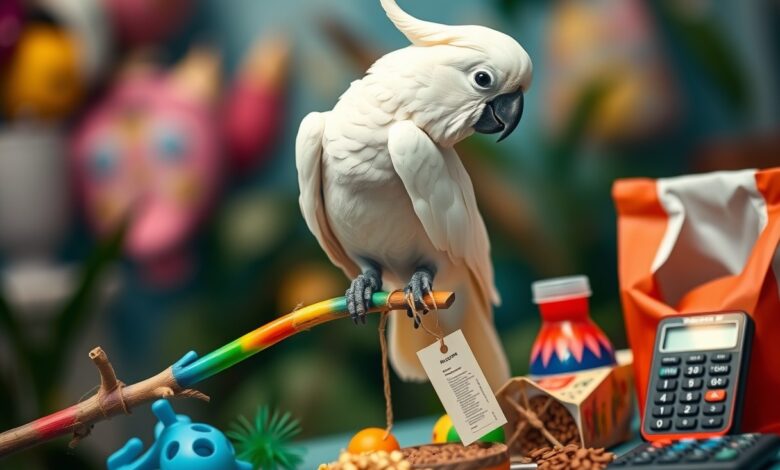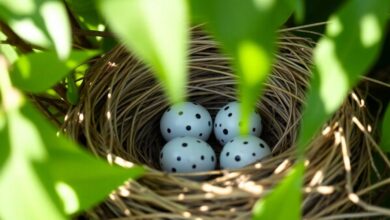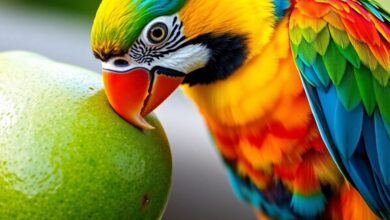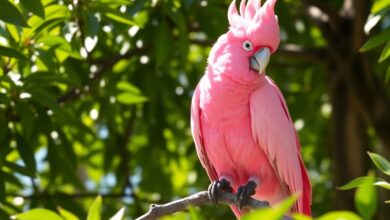
With the growing interest in owning a white cockatoo, understanding the 9 important factors that influence their price is crucial for you as a potential bird owner. These factors range from breeding lineage to age and health status, each playing a significant role in determining how much you might need to invest. Being informed will not only help you budget effectively but also ensure you make the right choice in acquiring a bird that meets your needs and expectations.
Key Takeaways:
- Species Variation: Different species of white cockatoos can vary significantly in price due to their popularity and rarity in the pet trade.
- Age and Health: Younger and healthier birds typically command higher prices, as they are often seen as more desirable companions.
- Location and Breeder Reputation: Prices can fluctuate based on geographical location and the reputation of the breeder, with reputable breeders usually charging more due to quality assurance.
Species Variations
Before stepping into the costs of white cockatoos, it’s crucial to understand the species variations that exist. Different types of white cockatoos, such as the Umbrella Cockatoo and the Sulphur-Crested Cockatoo, have distinct characteristics and price tags. These species can vary drastically in terms of availability, with the rarer varieties generally commanding higher prices due to their demand among collectors.
Different Types of White Cockatoos
Beside the common white cockatoo, you will find several species each with unique traits. Their market price ultimately hinges on factors like rarity and availability, resulting in varying costs:
| Species | Typical Price Range |
| Umbrella Cockatoo | $3,000 – $5,000 |
| Sulphur-Crested Cockatoo | $2,500 – $4,000 |
| White-tailed Cockatoo | $1,500 – $3,000 |
| Little Corella | $800 – $1,200 |
| Cockatoo Varieties | Varies greatly |
Any variation in supply can influence your decision regarding which species to purchase. Your choice can significantly impact your overall investment.
Rarity and Demand
After understanding species variations, it’s vital to analyze how rarity and demand converge, affecting market prices for white cockatoos. The less common a species is, the more likely it is to attract attention from pet owners, which drives up its price. Cockatoo enthusiasts often seek these unique birds, fueling demand, and in turn, impacting overall availability.
Hence, assessing the correlation between species rarity and consumer interest is key for anyone considering a white cockatoo. You should keep an eye on market trends, as the high demand for rare species leads to inflated prices. By understanding this dynamic, you can make a more informed decision, balanced between your desire for a specific bird and your budget.
Age of the Bird
Assuming you are considering adding a white cockatoo to your family, the age of the bird plays a significant role in its price. Younger birds typically require more care and attention, especially during their developmental stages, which can lead to higher initial expenses. On the other hand, adult birds may come with established behaviors and training, affecting both their cost and your readiness to handle their specific needs.
Juvenile vs. Adult Cockatoos
Any white cockatoo, whether juvenile or adult, brings its own set of characteristics that influence its price. Juveniles are often more expensive due to their higher training potential and adaptability, but they may require more socialization and attention. Adult cockatoos, while generally less costly, may already have ingrained behaviors and require a more experienced owner to manage any behavioral issues.
Breeding Considerations
On looking into white cockatoos, you should consider breeding potential tied to the bird’s age. Young cockatoos are typically easier to train for breeding, making them a sought-after choice in the market. However, older birds may have established breeding cycles that could limit their reproductive capabilities, impacting their price. Breeding age ranges from 1 to 5 years, with the peak period being around 2 to 3 years. Knowing the appropriate breeding age can significantly enhance your understanding of market value.
The breeding cycles of white cockatoos can be affected by their age, thereby impacting their marketability. The ideal age for breeding is vital, as too young may lead to health risks and too old may reduce fertility. Additionally, younger birds may have higher energy levels and be more receptive to mating, which can result in higher prices. You need to be aware that an older bird may come with less breeding potential, which can negatively impact its overall value.

Health and Condition
For anyone considering the purchase of a white cockatoo, the health and condition of the bird are paramount. A healthy cockatoo not only offers companionship but also ensures lower future veterinary costs and a longer lifespan. Investing in a bird with a robust health profile can justify a higher price, as such birds are typically more resilient and have better overall quality of life.
Health Certifications
Below, you should look for health certifications that provide documented verification of your cockatoo’s health status. These certifications are crucial as they indicate that the bird has undergone veterinary assessments and is free from contagious diseases. A certified healthy bird not only assures you of its well-being but also significantly enhances its market value, justifying a higher price.
Physical Condition
Health and overall physical condition directly influence how desirable a cockatoo is, impacting its price. A bird with vibrant, healthy feathering, clear eyes, and active behavior showcases its best qualities. Buyers are often willing to invest more in a bird that exhibits strong physical traits, as this is an assurance of good care and less risk of potential health issues.
At its core, the physical condition of a cockatoo should be closely examined. Look for signs of vibrant feathers, as dull or missing feathers can indicate health problems. Pay attention to your bird’s behavior; an active and playful cockatoo suggests a healthy environment. Conversely, signs of lethargy or weight loss may point to underlying issues. Always prioritize purchasing a cockatoo that displays optimal health to safeguard your investment and ensure a long-lasting companionship.
Training and Behavior
After bringing a white cockatoo into your life, you will quickly discover that training and behavior play a significant role in determining their price. Well-trained birds often demand higher prices as they offer a better companionship experience. A cockatoo that responds to commands, demonstrates tricks, and engages positively with its owners tends to be more sought after, thus inflating its market value.
Tame vs. Wild Birds
Tame cockatoos are typically raised in domestic environments and are accustomed to human interaction, making them easier to train and handle. In contrast, wild-caught birds may be more challenging to socialize and train, which can affect their pricing. Tame birds generally come at a premium because their training contributes to their appeal and reduced behavioral quirks.
Behavioral Traits
Against the backdrop of pricing, specific behavioral traits like sociability and intelligence significantly influence a cockatoo’s value. Owners often prefer birds that are affectionate and engage well with families. Highly intelligent cockatoos can learn commands and tricks quickly, which can enhance your bonding experience and justify a higher price tag.
Traits like affectionateness and curiosity can make cockatoos irresistible, while aggressiveness or destructiveness can be potential deal-breakers. A sociable and adaptable bird will likely create a positive environment in your home, while one that is fearful or overly aggressive might lead to challenges in management. Understanding these behavioral traits will help you choose a cockatoo that aligns with your lifestyle and expectations, ultimately affecting your investment in this beautiful companion.

Origin and Legality
To understand the price of a white cockatoo, you must consider its origin and legality. The source of the bird can significantly impact its price due to factors like availability and breeding practices. Birds sourced from reputable breeders in your region may be easier to care for legally, while those imported from other countries could come with additional costs and regulations, impacting your overall investment.
Breeder Reputation
By focusing on breeder reputation, you can see how ethical breeding practices influence the pricing of white cockatoos. When breeders maintain high standards for the health and well-being of their birds, you can trust that you’re investing in a healthier, better-adjusted pet. A strong reputation not only ensures good breeding practices but also fosters customer trust, often resulting in higher prices for birds that come from ethical sources.
Import/Export Regulations
Legality matters greatly when it comes to importing or exporting white cockatoos. Regulations can vary widely by country and may impact not just availability but also your purchase price. Understanding these laws ensures that you are buying from legal sources, avoiding hefty fines or even confiscation of your bird.
Indeed, the legal considerations surrounding the sale of white cockatoos are important for you to navigate. You’ll need to be aware of the specific import and export regulations that could limit your options or introduce unexpected costs. Additionally, being informed can protect you from purchasing birds that are sourced illegally. Always verify a breeder’s compliance with local wildlife laws and consider the long-term implications of your investment.

Location and Market Trends
Now, the location where you live can greatly affect the price of white cockatoos. This is primarily due to regional demand, competition, and the availability of these birds in your area. Urban centers may have more aviaries and breeders, leading to higher competition and potentially lower prices, while rural areas might face limited options, which can drive prices up. Knowing your local market trends will help you in making an informed purchase decision.
Regional Pricing Variations
Before you buy a white cockatoo, consider how geographic location impacts pricing. Areas with higher demand for exotic pets will naturally see increased prices. In contrast, regions with abundant supplies may offer lower costs due to competition among sellers. As you navigate the market, it’s vital to research your specific local area and surrounding regions to gauge pricing variations effectively.
Economic Factors
Location can also serve as a lens through which you view broader economic conditions affecting pet ownership. Levels of disposable income among pet owners contribute significantly to pricing. In wealthier areas, you may find that prices soar due to the affluent clientele, while regions with a lower income demographic may see reduced prices. Understanding these economic factors clears up pricing disparities and helps guide your budget.
It’s vital to analyze the economic landscape as you consider purchasing a white cockatoo. Factors such as average income levels, local economic health, and even employment rates can determine how much people are willing to spend on pets. Take into account that markets also fluctuate based on these trends, which can reflect in the pricing of white cockatoos you find. After gathering this information, you will be better equipped to navigate your purchase.
To wrap up
So, understanding the 9 important factors in white cockatoo bird price can empower you to make informed decisions when considering adding one of these beautiful birds to your life. By considering factors such as breed, age, and health, you can better evaluate what fits into your budget and lifestyle. For an in-depth look into the costs associated with cockatoos, you can check out How Much Does a Cockatoo Cost? (Cockatoo Price Guide …. Making an informed choice ensures a happy experience for you and your new feathered friend.
Q: What are the primary factors influencing the price of White Cockatoos?
A: The price of White Cockatoos is affected by several elements, including their age, health, and lineage. Younger birds are often more expensive due to their potential for training and bonding with their owners. Health is another significant factor, as a locally sourced healthy bird typically costs more than one that may require medical attention. Finally, birds with lineage from champion breeding lines or recognized show birds may also carry a higher price tag.
Q: How does the bird’s location impact its market price?
A: Geographic location plays a vital role in the pricing of White Cockatoos. In areas where demand for pets is higher or where exotic bird ownership is popular, prices may be elevated. Conversely, in regions where bird ownership is less common, prices may be lower due to reduced demand. Additionally, local regulations and availability of breeding facilities can influence the market price in a given area.
Q: Are there any seasonal trends that affect the pricing of White Cockatoos?
A: Yes, seasonal trends can impact the pricing of White Cockatoos significantly. Typically, prices may rise during holiday seasons when demand for pets increases as gifts. Similarly, breeding seasons can also affect prices, as the availability of young birds may lead to fluctuations. During times when birds are more readily available from breeders, prices may decrease, but scarcity can drive prices up.




